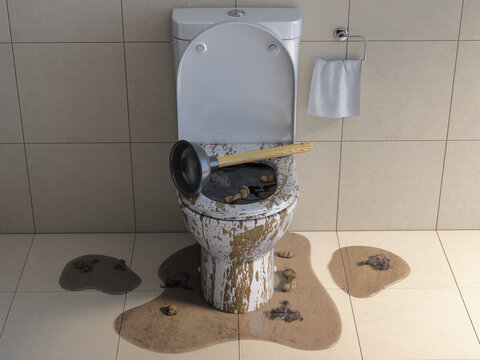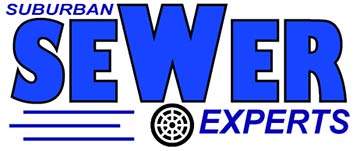
A sewer backup is when the contents of your home’s sewer line flow backward into the home, instead of outwards into the municipal sewer line in the streets. The result of a sewer backup is that raw sewage will be spilled into your home via the floor drains, shower drain, and toilet.
Due to its impact on your building and family, Spectrum Realty Services LLC notes that a sewer backup is the worst plumbing emergency that can happen in your home. A backed-up sewer line will stop you from using the home’s plumbing fixtures, inflict severe damage on your home, and endanger your family’s health.
But sewer backups don’t just happen. In most cases, they are caused by the “small” things we do that compromise the function and health of the drainage systems. Over time, the impact of these small actions can compound until they cause your sewer line to back up.
How can you prevent a sewer backup in your home and what are the signs of an impending sewer backup? To successfully prevent your sewer line from backing up, you need to understand what causes the problem in the first place.
Potential causes of sewer backup in your home
Sewer line backups are caused by blockages. Sewer line blockages can happen for any of the following reasons.
- Fats, oils, and grease
Dumping fats, oils, and grease (FOG) in your drains predisposes the sewer line to blockages because inside the pipes, fats, oils, and grease solidify, trapping debris until they form a solid mass that blocks the pipes.
- Flushing the wrong items
Flushing so-called “flushable” items, like paper wipes or towels, and cat litter (anything except water, toilet paper, and human waste) into the toilet can block your sewer line.
- Food waste
Starchy, fibrous, and hard food scraps will block your sewer line. This includes items like mashed potatoes, rice, celery, corn silk, etc. Coffee grounds and eggshells will also block your pipes.
- Tree roots
If tree roots enter your sewer line via a weak joint, a leaky section, or any entry point in the line, they can block the pipes. Tree roots penetrate a sewer line to get at the nutrient-rich water inside it.
- Collapsed sewer line
A sewer line can collapse because of erosion, house settling, and grease buildup. Sometimes the line does not collapse; it just develops a belly (a sagged section that creates a low spot).
- Outdated sewer line
Sewer lines with clay and galvanized pipes or other outdated pipe materials are more likely to block. These materials are more susceptible to corrosion, which increases the risk of clogs, tree root invasions, collapse, etc.
Preventing sewer backups in your home
The following measures can help you prevent a sewer backup in your home.
Don’t dump things in your drains: The first step is obviously to stop abusing your sewer line by flushing harmful items into the toilet or dumping fats, oils, grease, and food scraps as a whole into the drains. But this step alone won’t remove these items if they are already inside your sewer lines.
- Installing drain strainers
This small step will minimize the amount of debris that accidentally enters the sink and shower drains. When installing strainers, make sure they are the right size. Drain strainers should be cleaned periodically to keep them effective.
- Professional drain cleaning
If you and your household have been dumping fats, oils, and grease (FOG) into your sinks or flushing the wrong items into the toilet, you can get rid of the materials inside your sewer system by having the sewer line cleaned professionally, using hydro jetting or sewer rodding.
- Sewer rodding
To clean the sewer line, a flexible steel rod with a mechanical cutting head at its end is inserted into the pipes. A motor is then used to spin the rod and drive it forward into the pipes, enabling it to slice through and dislodge the debris inside the sewer line. Sewer rodding is highly effective for clearing clogs and blockages, including those caused by paper products, tree roots, and food scraps.
- Hydro jetting
Using high pressure water delivered directly into the sewer line by a flexible hose and high pressure steel nozzle, hydro jetting blasts the debris inside your pipes to loosen and flush them out of pipes. By spraying the pipe wall while dislodging the debris, Hydro jetting cleans the pipe thoroughly to restore maximum flow inside the sewer line. It is effective for getting rid of grease buildup, scale, and tree roots.
- Sewer camera inspection
A sewer camera inspection lets you view the inside of your sewer line to assess the condition of the pipes. A high-resolution waterproof camera is attached to a flexible cable and inserted into the pipes to capture a real-time image of the pipe channel. Conducting this inspection periodically or before professional drain cleaning gives you a clear picture of the problems in the line, allowing you to choose the right solutions.
Finally, what are the signs of an impending sewer backup in your home? If you have the following issues in your home, your drains may be on the verge of backing up: multiple clogged drains, chronically blocked drains, the smell of sewer gases in your home and strange sounds from your toilet.

